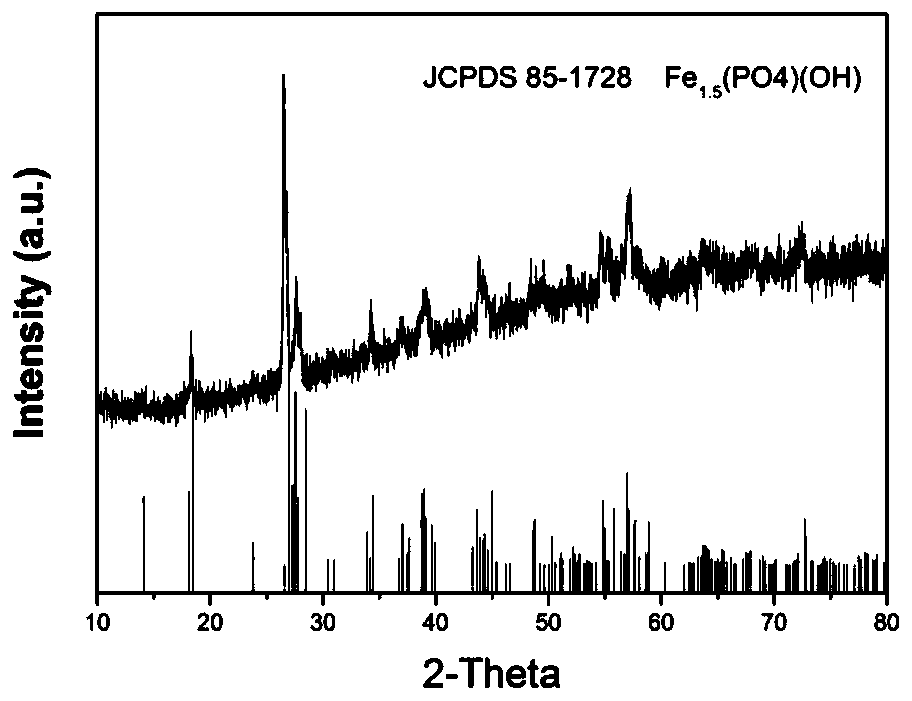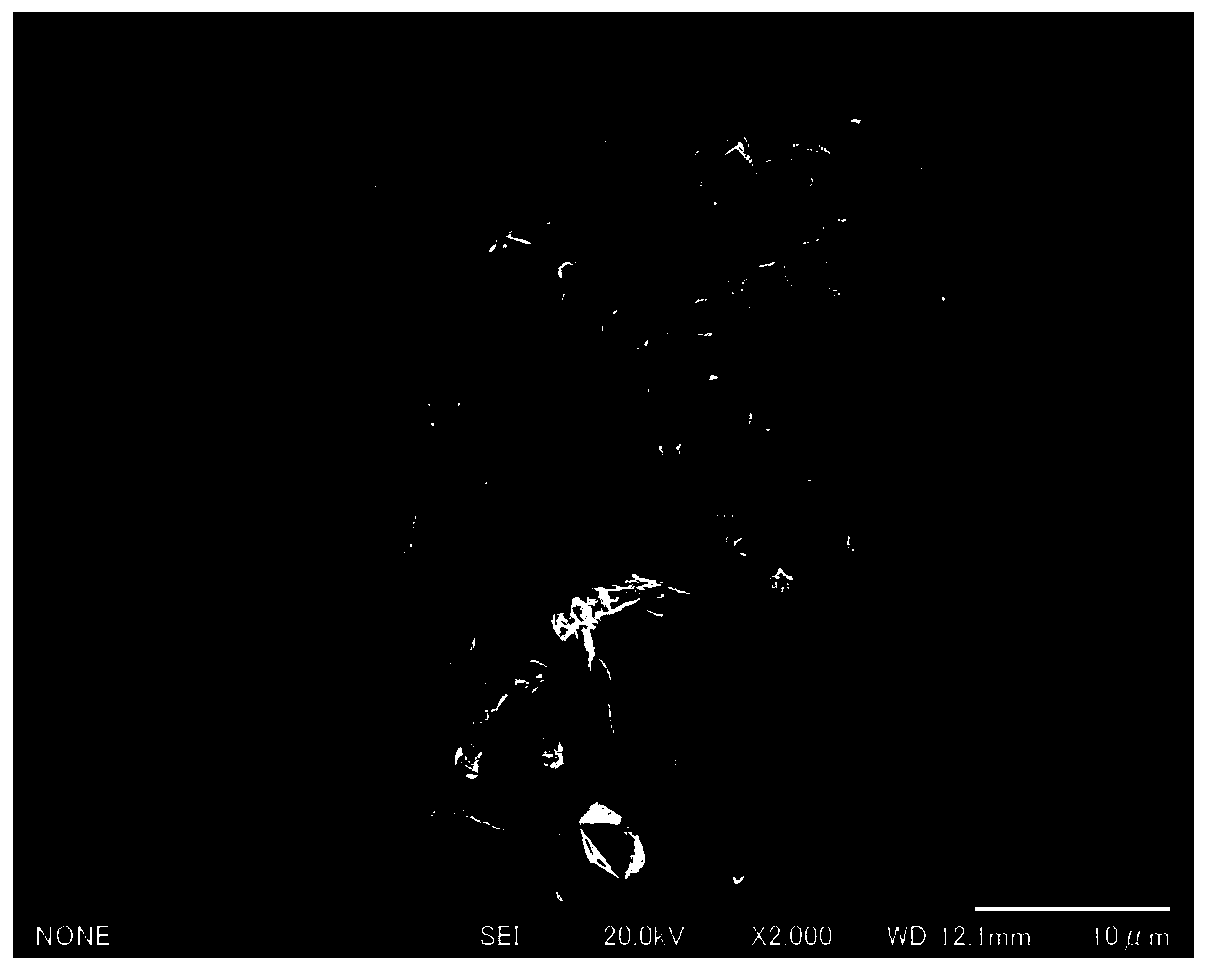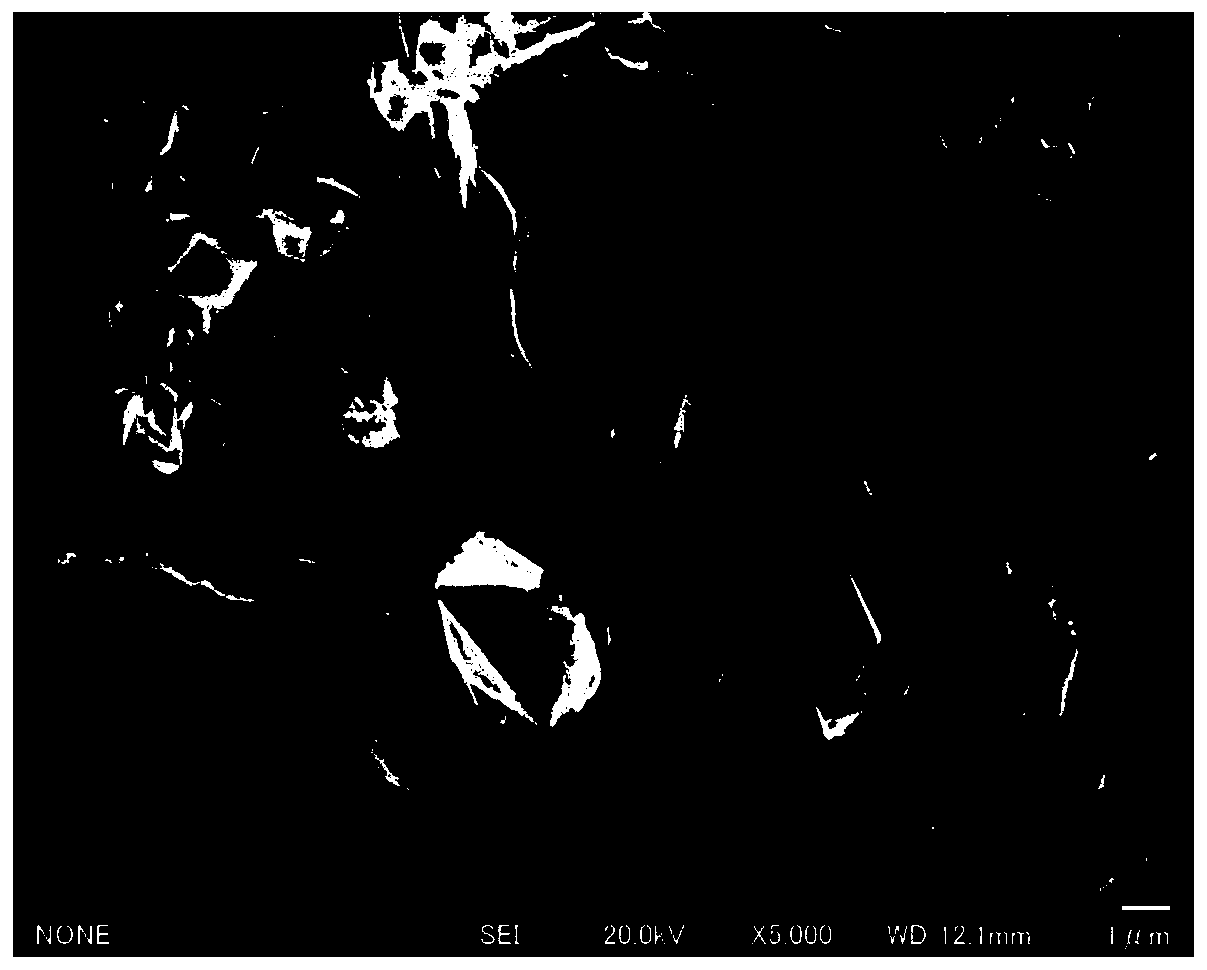A preparation method of graphene-loaded iron hydroxyphosphate hollow octahedral lithium-ion battery positive electrode material
A lithium-ion battery and iron hydroxyphosphate technology, applied in the field of electrochemistry, can solve problems such as poor conductivity and achieve excellent electrochemical performance
- Summary
- Abstract
- Description
- Claims
- Application Information
AI Technical Summary
Problems solved by technology
Method used
Image
Examples
preparation example Construction
[0024] A method for preparing a graphene-loaded iron hydroxyphosphate hollow octahedral lithium-ion battery positive electrode material, comprising the following steps:
[0025] 1) Dissolve commercially available graphene oxide in deionized water to form a solution of 1 to 5 mg / mL, and use an ultrasonic generator to sonicate for 2 to 6 hours at a power of 300 W to form a uniformly dispersed graphene oxide suspension, denoted as A ;
[0026] 2) Put analytically pure soluble ferrous salt (ferrous sulfate, ferrous chloride, etc.), urea, ammonium dihydrogen phosphate or diammonium hydrogen phosphate in a molar ratio of 1:1:0.5~1:1:5 Add to the mixed solution of deionized water and ethylene glycol (or glycerin), the volume ratio of water and ethylene glycol (or glycerin) is 5:1~5:5, stir for 10min-30min, then add to the suspension In A, it is configured as a mixed solution B, the concentration of the ferrous salt in the mixed solution B is 0.05-0.5mol / L, and the concentration of g...
Embodiment 1
[0031] 1) Dissolve commercially available graphene oxide in deionized water to form a solution of 1 mg / mL, and use an ultrasonic generator to sonicate for 3 hours at a power of 300 W to form a uniformly dispersed suspension of graphene oxide, which is designated as A;
[0032] 2) Add the analytically pure soluble ferrous ferrous salt ferrous sulfate, urea, and ammonium dihydrogen phosphate in a molar ratio of 1:1:0.5 to the mixed solution of deionized water and ethylene glycol, and the water and ethylene glycol The volume ratio is 5:1, stirred for 10 minutes, and then added to the suspension A to configure a mixed solution. The concentration of ferrous ferrous salt is 0.05mol / L, and the concentration of graphene oxide is 0.5mg / mL. denoted as B;
[0033] 3) Pour the mixed solution B prepared above into a microwave hydrothermal reactor with a filling degree of 60%, then seal the reactor, put it into a microwave hydrothermal reactor, and control the heating rate at 5°C / min. The ...
Embodiment 2
[0039] 1) Dissolve commercially available graphene oxide in deionized water to form a solution of 5 mg / mL, and use an ultrasonic generator to sonicate for 2 hours at a power of 300 W to form a uniformly dispersed suspension of graphene oxide, which is designated as A;
[0040] 2) Add analytically pure soluble ferrous ferrous salt ferrous sulfate, urea, and ammonium dihydrogen phosphate in a molar ratio of 1:1:1 to a mixed solution of deionized water and glycerin, and the volume ratio of water and glycerin is 5 : 3, stirred for 20min, then joined in the suspension A, configured into a mixed solution, the concentration of ferrous ferrous salt was 0.5mol / L, and the concentration of graphene oxide was a solution of 2.5mg / mL, denoted as B;
[0041] 3) Pour the mixed solution B prepared above into a microwave hydrothermal reactor with a filling degree of 40%, then seal the reactor, put it into a microwave hydrothermal reactor, and control the heating rate at 10°C / min. The reaction t...
PUM
 Login to View More
Login to View More Abstract
Description
Claims
Application Information
 Login to View More
Login to View More - R&D
- Intellectual Property
- Life Sciences
- Materials
- Tech Scout
- Unparalleled Data Quality
- Higher Quality Content
- 60% Fewer Hallucinations
Browse by: Latest US Patents, China's latest patents, Technical Efficacy Thesaurus, Application Domain, Technology Topic, Popular Technical Reports.
© 2025 PatSnap. All rights reserved.Legal|Privacy policy|Modern Slavery Act Transparency Statement|Sitemap|About US| Contact US: help@patsnap.com



